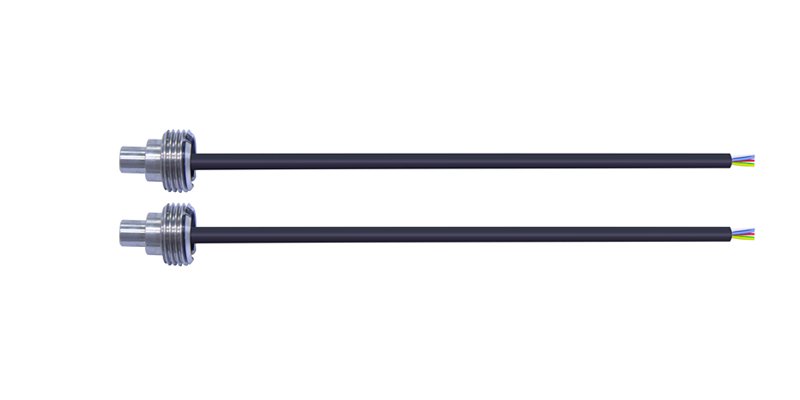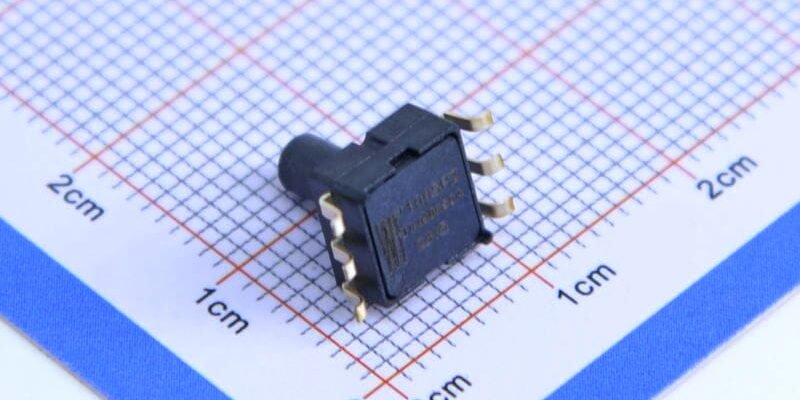
Pressure sensors are a common type of pressure instrument and are used in a variety of industries. Users in the use of pressure sensors to determine how to detect micro-pressure pressure sensor is very important to detect micro-pressure pressure sensor according to the purpose of different detection items are not the same, of course, the detection method will also be different. Today I would like to introduce you to the three commonly used detection methods for pressure sensors, I hope to help you.
1. Pressurization detection
check the single method is: to the sensor power supply, blowing the pressure sensor with the mouth of the air-conducting holes, with a multimeter voltage file to detect the output of the sensor voltage change. If the relative sensitivity of the capteur de pression différentielle is very large, the amount of change will be obvious. If there is no change at all, it is necessary to change to an air pressure source to apply pressure.
By using the above methods, the condition of a sensor can basically be detected. If accurate detection is required, it is necessary to use a standard pressure source to apply pressure to the differential pressure sensor and calibrate the sensor according to the magnitude of the pressure and the amount of change in the output signal. And if the conditions permit, the temperature detection of the relevant parameters.
2. Zero point detection
Using a multimeter voltage file, detect the zero point output of the sensor under the condition of no pressure applied. This output is generally a mV level voltage, if it exceeds the technical specifications of the sensor, it means that the zero deviation of the sensor is out of range.
3. Bridge detection,
the main detection of the sensor circuit is correct, generally a Wheatstone full-bridge circuit, the use of multimeter ohms, the measurement of the impedance between the inputs, as well as the impedance between the outputs, the two impedance is the input and output impedance of the Capteur de pression MEMS. If the impedance is infinitely large, the bridge is broken, indicating that there is a problem with the sensor or the definition of the pin is not judged correctly.

All Sensors Sensor Pressure Points are application tips that can be used with micro-electromechanical (MEMS) pressure sensors to simplify design and avoid common pitfalls.
Pressure Point 1: MEMS Pressure Sensors - Pressure Measurement Type
L'avènement de Capteurs de pression MEMS has changed the way system designers and application engineers measure pressure. Simplicity of use, small size, low cost and ruggedness enable these sensors to handle automotive and industrial process control as well as medical and handheld portable device applications. For example, high-precision altitude measurements in handheld navigation devices such as smartphones with three-axis accelerometers, gyroscopes and magnetometers can add up to one-tenth of a degree of freedom. Pressure measurements enable navigation devices to locate the exact floor of a destination.
MEMS pressure sensors typically measure the pressure difference across a silicon diaphragm. As shown in Figure 1, there are three types:
Gauge pressure (a), a pressure measurement where the zero point is a reference point to the local atmospheric pressure
Absolute pressure (b), a pressure measurement whose zero point is based on the absolute vacuum sealed within the wafer.
Differential pressure (c), the difference between any two pressures is called the differential pressure (delta P or ΔP).

In these designs, the diaphragm is micro-mechanically etched, which is a chemical etching process. Measurement techniques can include capacitive or resistive (piezoelectric or piezoresistive). The piezoresistive design is shown in Figure 1. A vacuum is a negative gauge pressure or a value below atmospheric pressure. When specifying or discussing the type of pressure measurement, it is important to identify the type of measurement in order to convey an accurate description of the measurement technique. Table 1 shows the sensor requirements for several common measurements.

Table 1. Comparison of common pressure measurements and measurement types.
Pression atmosphérique et altitude
The most basic pressure measurement is assumed to be atmospheric pressure. The standard atmospheric pressure at sea level is 29.92 inches of mercury (Hg) (760 mm Hg (Torr) or 14.696 psi). Atmospheric pressure decreases with increasing altitude and increases with decreasing altitude. Low and high weather patterns decrease or increase atmospheric pressure. Fluidless barometers provide absolute pressure measurements.
An altimeter is an absolute pressure gauge (measurement) that shows altitude above sea level. The conversion of air pressure to altitude is often done by using an altimeter. For example, an altitude of 10,000 feet above sea level is 10.1 psia (69.7 kPa). The pressure altitude (Halt) can be calculated using this equation:
Halt = (1-(psta/1013.25)^0.190284)x145366.45 Eq. 1
Where Halt is the elevation in feet and psta is the pressure in millibars (mBar) or hectopascals (hPa)
Hauteur de colonne liquide
For a standard liquid, the absolute pressure at depth H in the liquid is defined as: Pabs = P + (ρ x g x H) Eq. 2
Remark.
Pabs is the absolute pressure at depth H in kg/m-s 2 (or Pa).
P is the external pressure at the top of the liquid, usually the open atmospheric pressure.
Density of the liquid (e.g., 1 g/cm3 for pure water, 1.025 g/cm3 for brine at 4°C)
g is the acceleration of gravity (g = 9.81/s2) (32.174 ft/s2))
H est la profondeur en mètres ou pieds
Profondeur de l'eau
According to Eq. 2, the increase in pressure of an underwater object is based on the density and depth of the liquid. Common depth measurements include freshwater or saltwater. For freshwater, the pressure increase is 0.43 psi per foot, and in saltwater, it is 0.44 psi per foot. the diver’s submerged pressure gauge (SPG) or depth gauge is an absolute pressure reading. The dive calculator provides the time required for a safe ascent because even a depth of 100 feet produces a pressure of 400 kPa (3.951 atmospheres, or 58.1 psi).
Débit de tuyaux
Several factors determine the pressure drop that occurs in fluid flow applications, including laminar versus turbulent flow, velocity, moving viscosity and Reynolds number, roughness inside the pipe, as well as diameter, length and form factors. Orifice plates, venturi tubes and nozzles simplify the situation. In these cases (see Fig. 2) the flow rate is related to ΔP (p1-p2):
q = cd π/4 D22 [2(P1 – P2) / ρ(1 – d4)]1/2
Remark.
Q est le flux en m3 / s
cd is the coefficient of flow, area ratio = A2/A1.
P1 and P2 are in units of N/m2.
Ρ is the fluid density in kg/m3.
D2 is the orifice, venturi or nozzle diameter (m)
D1 is the upstream and downstream pipe diameter (m)
D = rapport D2 / D1 Diamètre

Figure 2.p Fluid Measurement Element.


